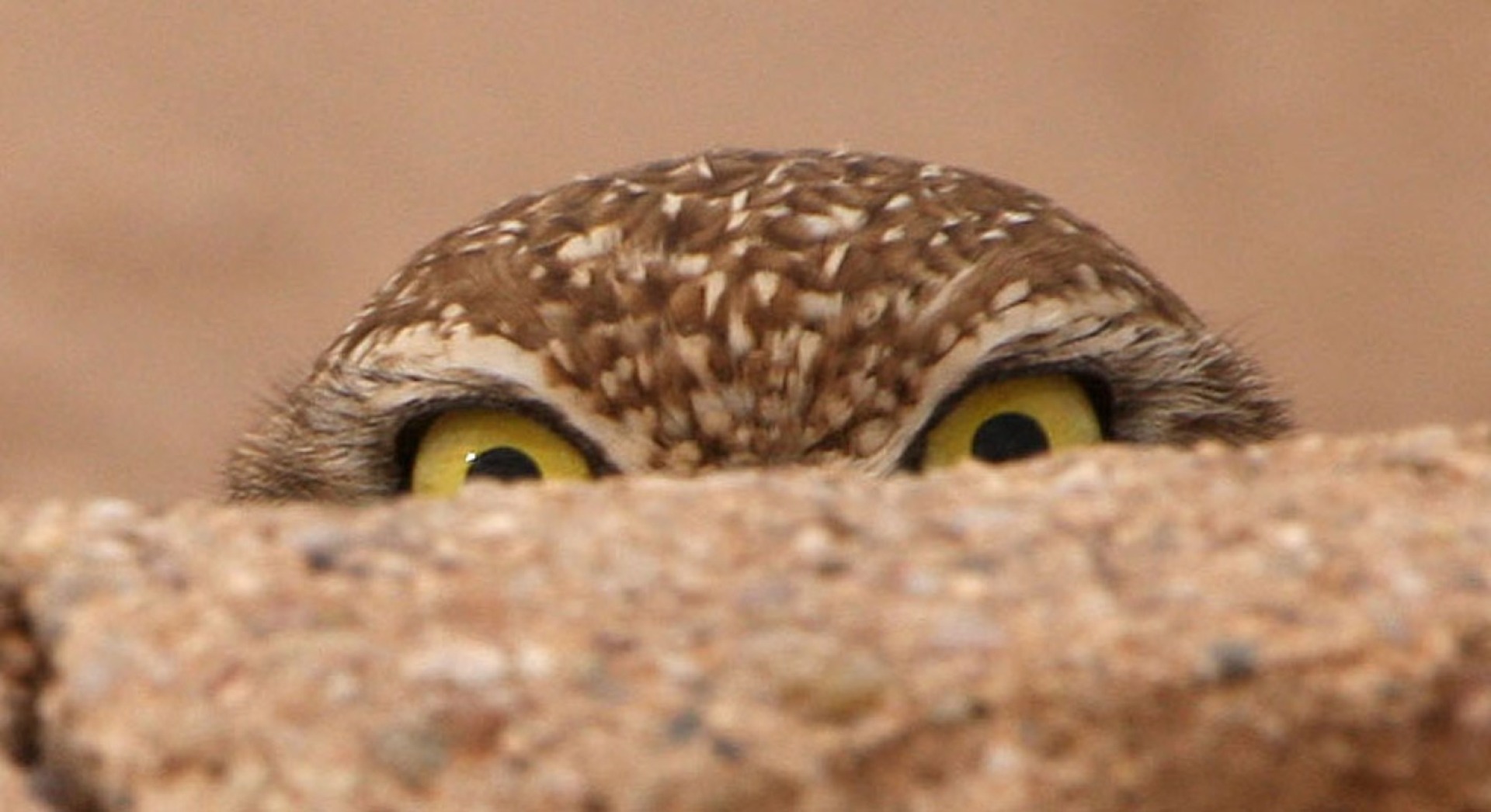Owls - Our Early Nesters
Marla Mertz, Marion County Conservation
The cold seems to make winter quiet, almost too quiet. The only sounds are of wind, plows, snow shovels, and the crackling of ice and snow under your feet.
If you were out stargazing in the light of the January moon, you may have heard the distant calling of the male great horned owl, Iowa’s earliest nester. Finally, the sounds of the night are bringing hope to the coming of migration and spring.
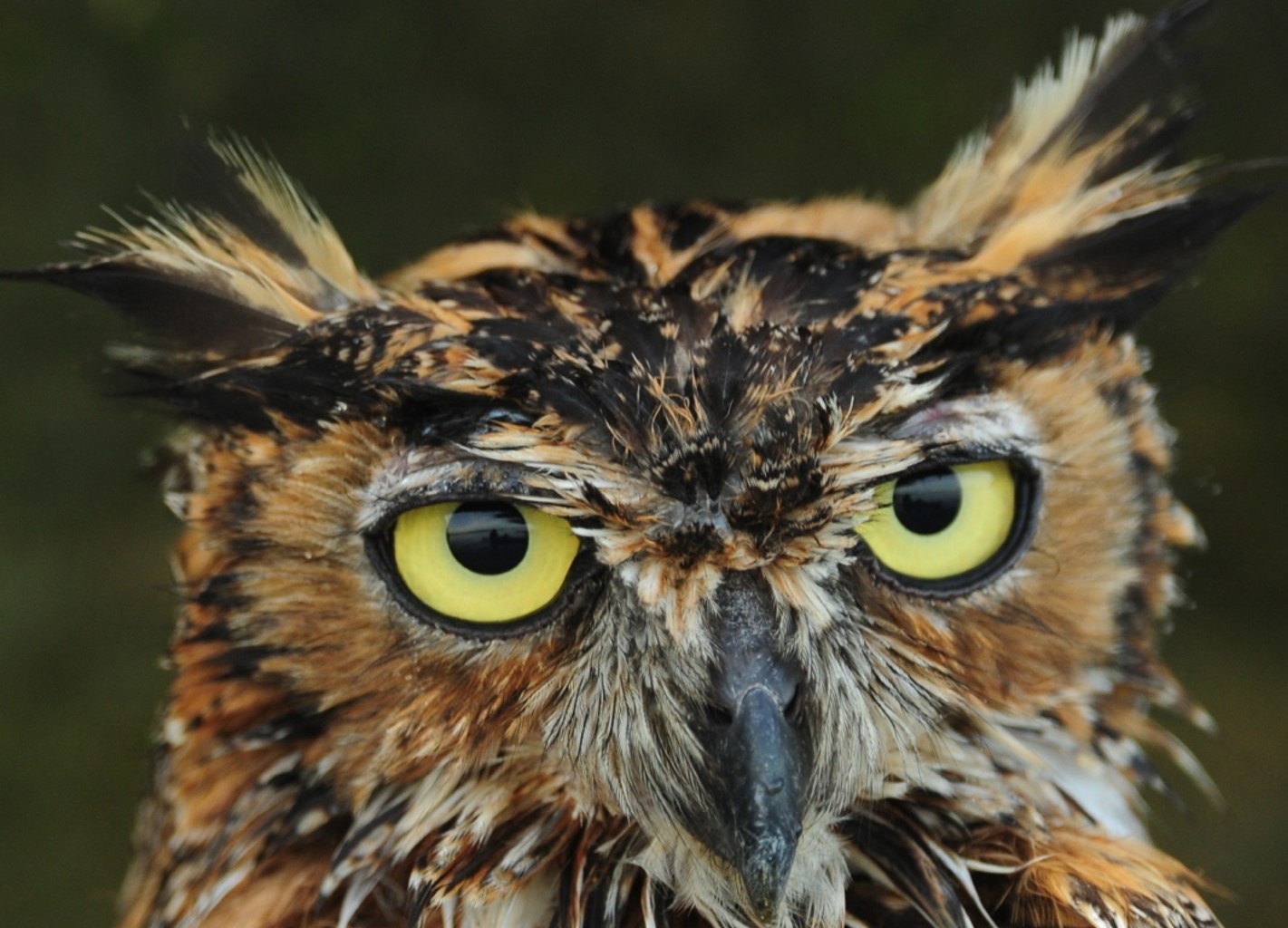
View the "Early Nesters" album in Google Photos.
Great horned owl
The great horned owl (some know this owl as the “tiger of the woods”) is Iowa’s largest and most adaptable owl. These owls are Iowa’s earliest nesters, commonly laying two eggs in late January or early February. They occasionally lay up to four eggs. Although roosting separately in trees, thick brush, or cavities, these owls are monogamous (one male and one female and neither has any involvement with other nesting birds) and defend their territories beginning in the fall, but the intensity increases before egg laying. Late January and early February seems too early to being laying eggs… how will these owls manage to find enough food for themselves and soon-to-be-hatching owlets?
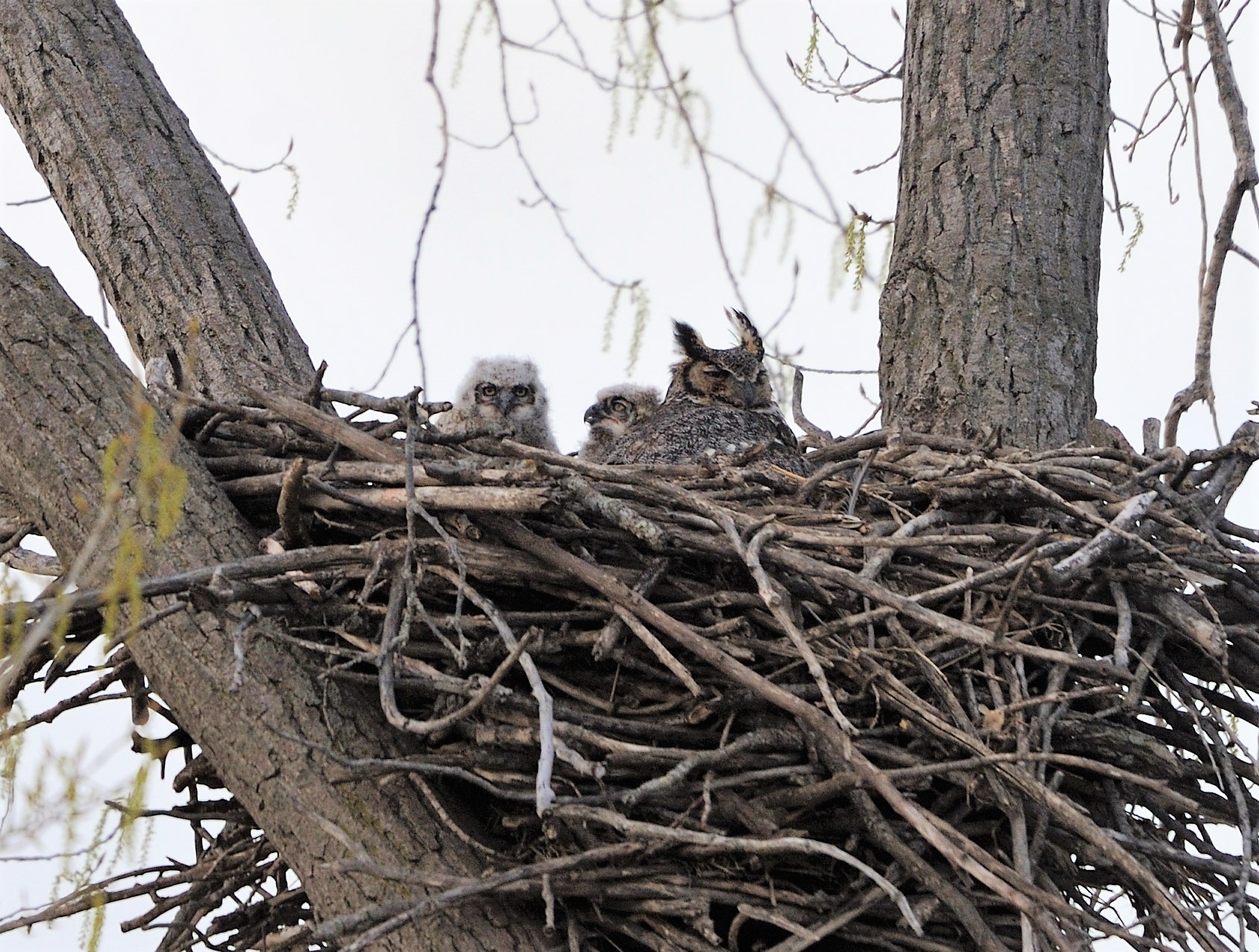
These cat-like owls typically nest in large trees like cottonwoods and oaks, but use nests built by red-tailed hawks, eagle, crows, squirrels, and herons. They line the nest with leaves, bark, soft downy feathers plucked from their breast, along with fur and feathers from their prey and trampled pellets. It seems a possibility that great horned owls nest early due to the availability of unoccupied nests. Both the male and female participate in raising the young. As the owlets grow and mature, the advantages of an early food supply will be of great benefit. By summer, the young will be learning to hunt on their own and the availability of the springtime bursts in the rabbit and rodent populations will be perfect timing. The owls definitely have their work cut out for them this winter.
- Natural history of the great horned owl from the Cornell Lab of Ornithology
- Different calls and sounds from the Cornell lab of ornithology
- Let’s continue on the journey of Iowa’s owls and their nesting times. Owls captivate many of us with their big eyes, amazing feats of strategy, and silent flight. Do you have memories of taking a walk on a moonlit evening and seeing the silhouette of an owl in a leafless tree? Have you jumped at the eruption of an owl hooting hidden somewhere around you?
Barred owl
The barred owl (some call this owl the rain owl) is the second most common resident Iowa owl and the second earliest nester. Barred owls nest in early as February laying two to four eggs. This champion hooter becomes very vocal just before dawn or in the late afternoon. This owl’s famous call can be heard throughout the night, especially when the moon is bright. The sounds of human laughter or monkeys chattering, can seemingly bring a smile to your face. But you may also recognize the infamous question of “Who cooks for you, who cooks for you all.” These monogamous owls begin their territorial vocalizations in late fall and early winter and commonly use empty hawk or crow nests, but finding a hollow tree is highly desired. They seldom add to their nesting accommodations. They may have the same mate, year after year. The barred owl is often confused with the endangered barn owl, especially if it takes up residence in a barn. While the barred owl can also be confused with the great horned owl because of their “hooting” calls, the barred has no ear tufts and has dark eyes. Barred owls are normally found along forested river and creek bottoms. The food of the barred owl is more varied than most. Vole and mouse populations vary from year to year, but they really seem to focus on what is most abundant. Again, the timing of the young beginning to hunt will benefit from those booming populations of rodents. Moles, crayfish, frogs, snakes, and large insects make up the rest of their diet when they are available.
- Natural history of the barred owl from the Cornell Lab of Ornithology
- Sounds and calls from Cornell Lab of Ornithology
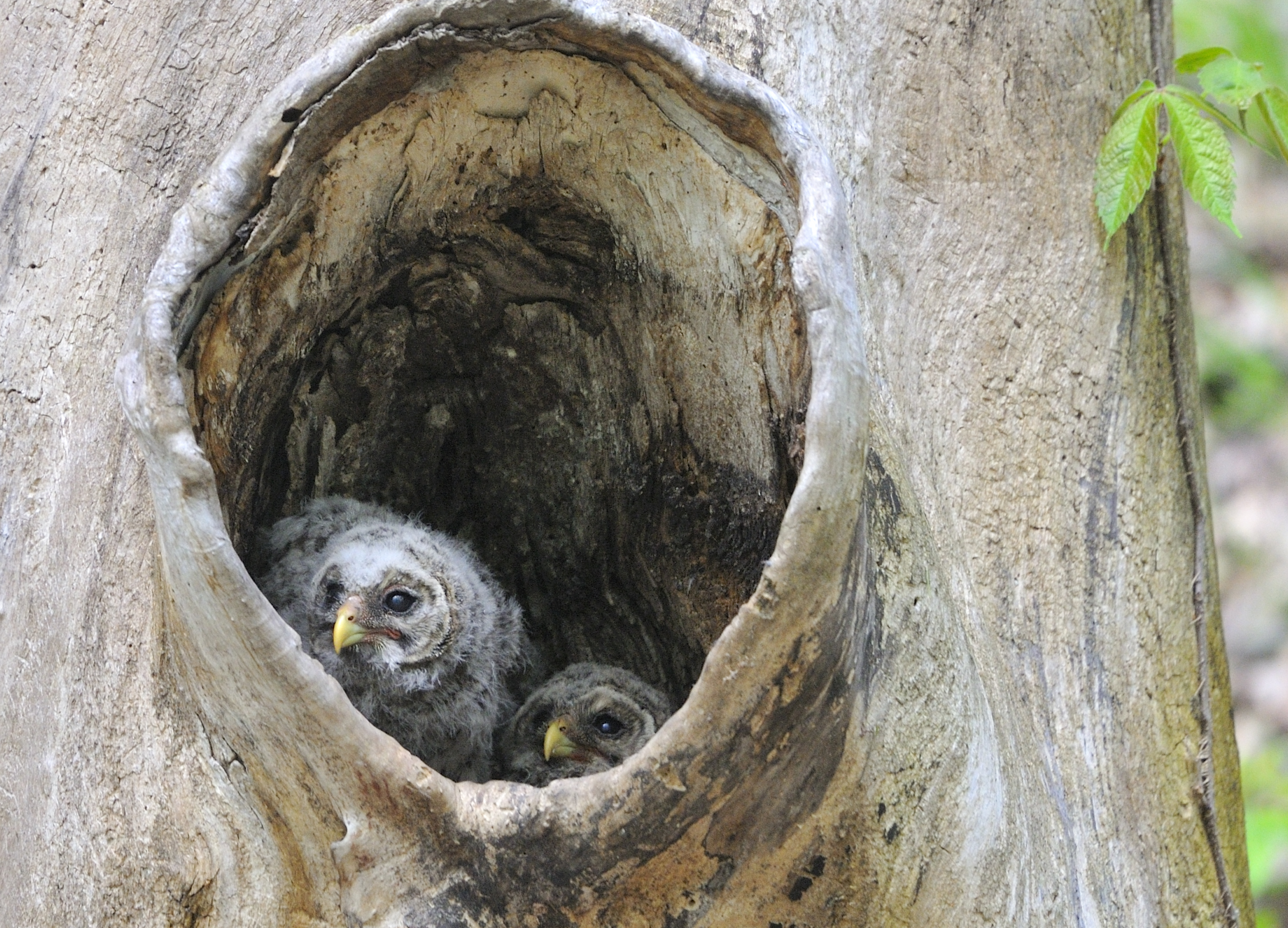
Long-eared owl
Migrant long-eared owls are often found in Iowa during the winter months beginning mid-October and usually leaving by late March. They set up historic roost sites in conifer groves that join grassy areas. They are rare nesters in Iowa and are on the Iowa Threatened Species list. Some long-eared owl nesting has occurred in recent years and they seem to nest in late March to early April. Unused crow, hawk, or squirrel nests are the chosen homes. These cat-like owls look like a smaller version of the great horned owl, but the notable X pattern on the face and ear tufts that are very close together give them their own unique tall, thin, erect appearance, blending with their tree background. The song of the male is an even hoot repeated every two to four seconds, other calls that include “alarm calls” resemble a barking call. Voles and mice seem to be the popular food source.
- Natural history of the long-eared owl from Cornell Lab of Ornithology
- Sounds and calls from Cornell Lab of Ornithology
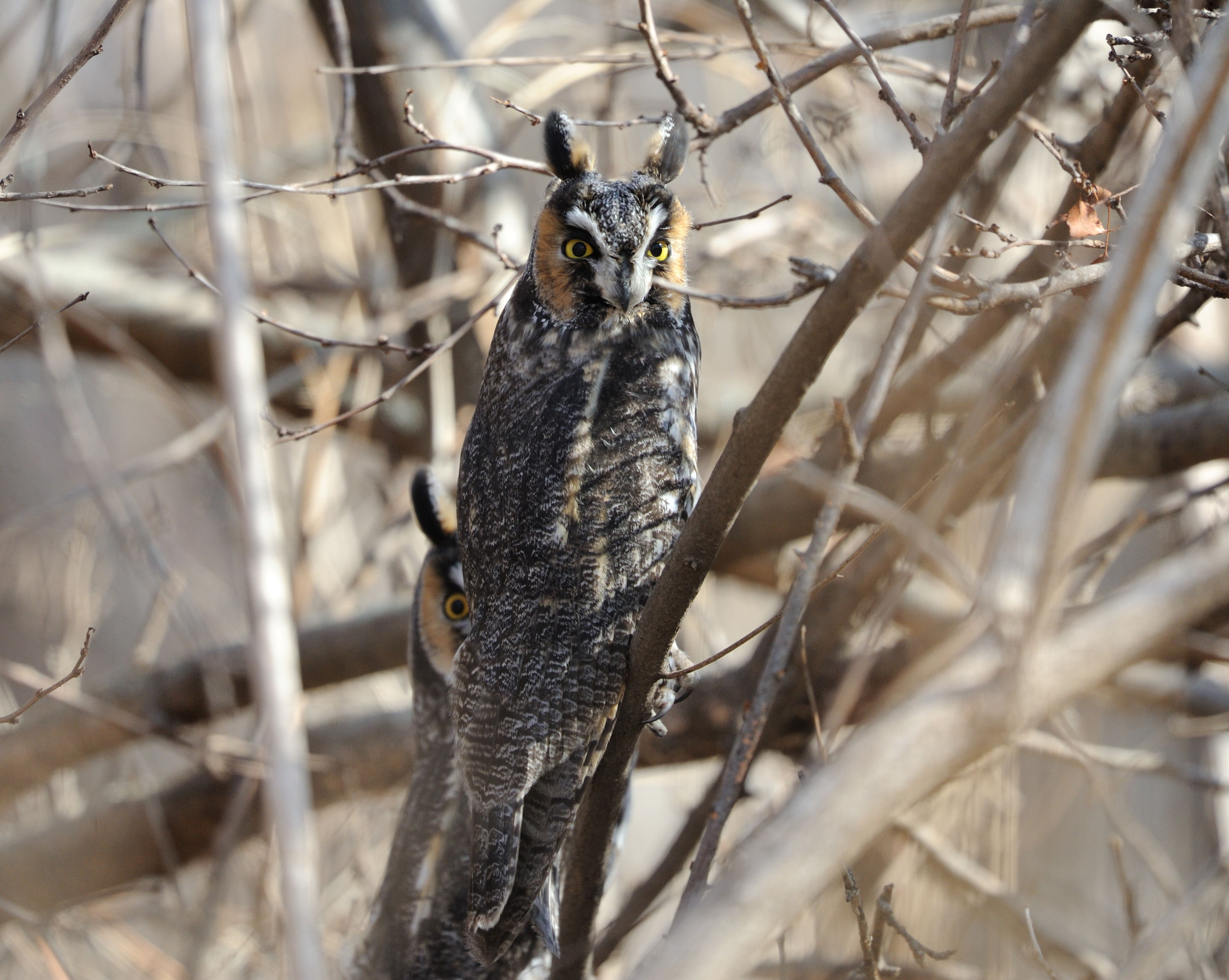
Barn owl
The ghostly, night owl known as the barn owl is a very delicate owl and the light coloration reflects that appearance. This owl can be a farmer’s best friend, especially if grasslands are close by. It is one of the better rodent specialists of the owl world. These truly nocturnal owls have small dark eyes and a heart shaped face. (The only other dark-eyed owl in Iowa is the barred owl.) This owl isn’t a hooter, but has more of a harsh scream or hissing sound.) They typically meet up with their mates in March or early April and are considered a spring and summer nester. As with other owls, they do not traditionally build a nest, but will lay their eggs on a carpet of pellets. With the elimination of dead trees, older barns, knee-high grasslands and oak-savanna habitat, they are on the Iowa listing of Endangered Species. Approximately two active nests per year were recorded in the 1990s by the Iowa Department of Natural Resource’s Wildlife Diversity Biologists. In recent years, Iowa has averaged about five reported nestings each year and those have been located in old grain bins, abandoned buildings, and nest boxes that were placed through a 1980s Iowa DNR restoration project. Voles are a major prey item, but rats, moles, bats, snakes, frogs, and large insects are also listed on their palatable menu.
- Natural history of the barn owl from Cornell Lab of Ornithology
- Sounds and calls from Cornell Lab of Ornithology
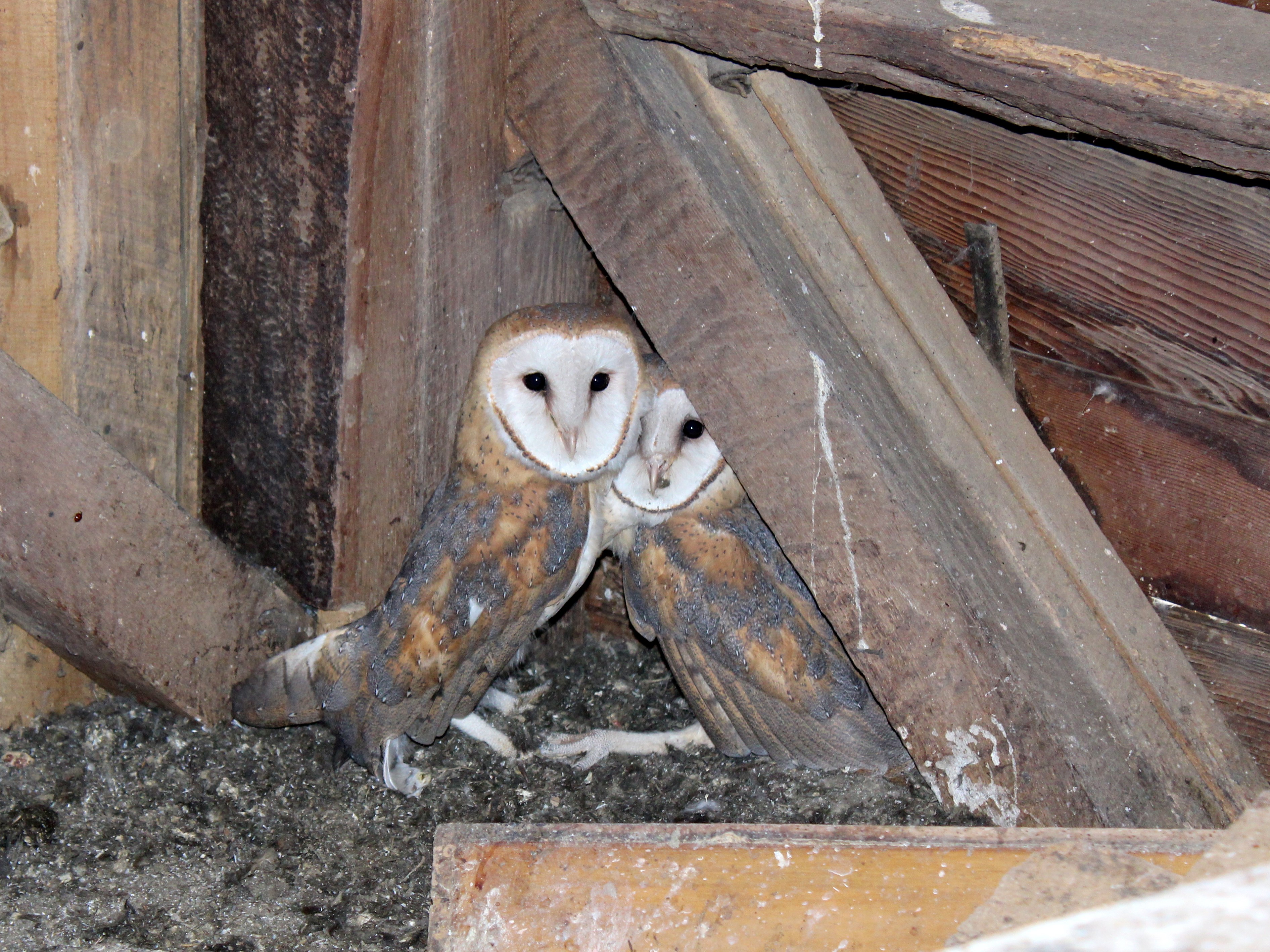
Eastern screech owl
The eastern screech owl is a little 7-ounce wonder and is the smallest nesting owl in Iowa. Screech owls are permanent residents in Iowa, but are often missed as they are so secretive and quiet during nesting. They may be little, but have a spooky, shivering like sound that has been known to send goose-bumps down a grown man’s back. The shrill of this descending whinny is a memorable one. Screech owls are monogamous, nest in April and may continue nesting into early summer, and thrive in riparian corridors, urban woodlands, and forested wetlands. They tend to nest in tree cavities, old woodpecker holes, and are commonly found in nesting boxes placed for wood ducks and other wildlife species. They eat a large number of invertebrates like insects and earthworms, but their diverse diet can range from frogs to rodents to birds. There are actually two color phases of this short, stocky bird -- grey and a striking red color.
- Natural history of the screech owl from Cornell Lab of Ornithology
- Sounds and calls from Cornell Lab of Ornithology
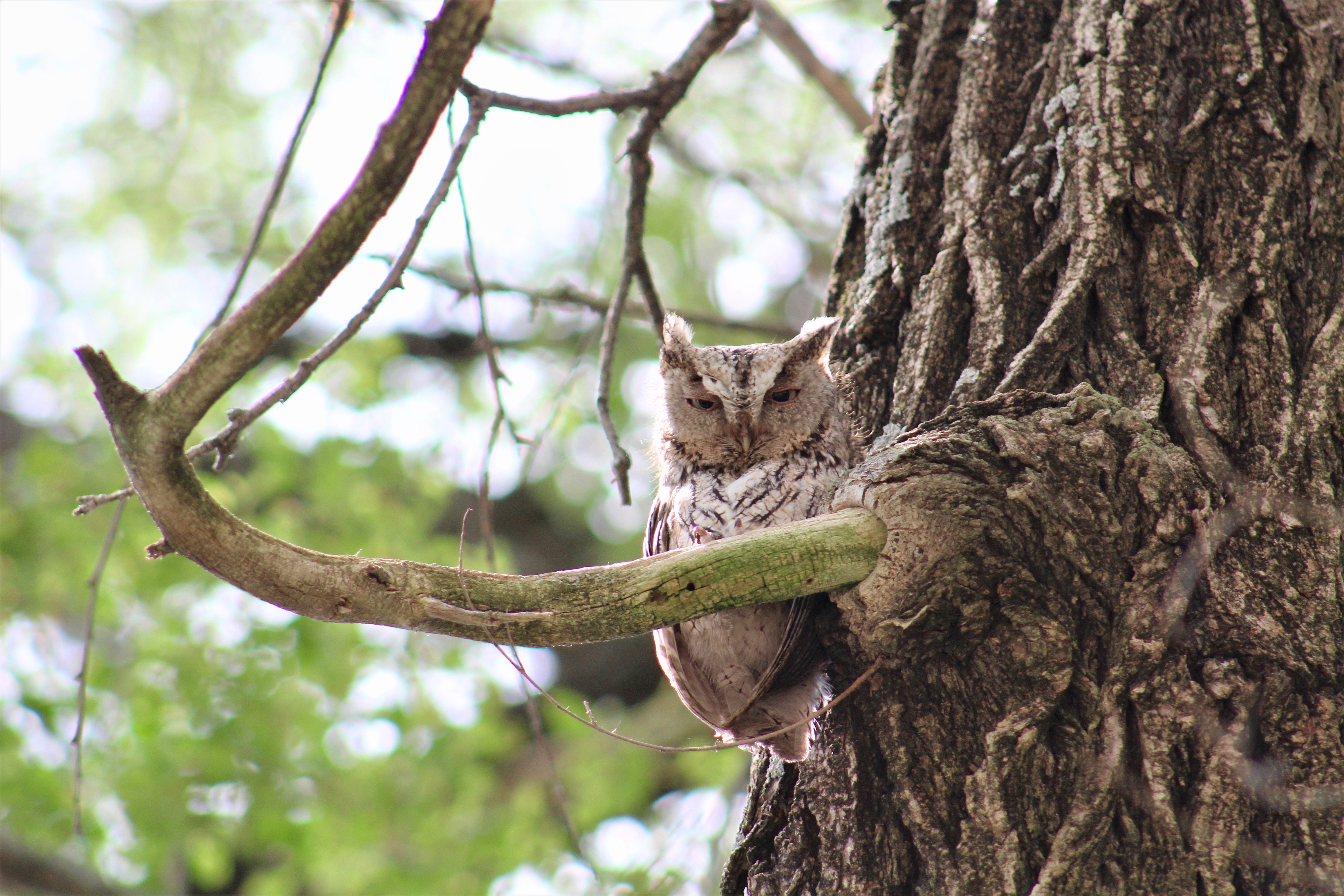
Burrowing owl
Athene cunicularia (the scientific name of the burrowing owl, listed as genus and species) refers to the Greek goddess of wisdom whose favorite bird was an owl. Nesting occurs in March or April. Adopting unused badger tunnels or fox and coyote dens, this is very much a grassland bird. Burrowing owls are active day and night. Insects like termites, katydids, crickets, and beetles are collected during the daylight hours and small animals are normally hunted during the night. Although extremely rare in Iowa, the burrowing owl is the only owl that nests underground. Iowa was once mostly covered in tallgrass prairie and the burrowing owl habitat is short-grass prairie. If you have traveled to South Dakota, you may have gotten an opportunity to see these prairie owls among the prairie dogs. This owl is very much on the eastern edge of its natural habitat, so it is not listed as an Endangered, Threatened or Special Concern Species in Iowa. Just a few nestings of the burrowing owl have been located in the northwestern portion of the state. Dick Bierman, former Cherokee County Conservation Board member and photographer of the noted burrowing owls, remembers one past nesting in the 1980s when a pair took up residence near a hog farm in the eastern portion of Cherokee County. Only a few other noted nestings near the Loess Hills have been discovered.
- Natural history of the burrowing owl from Cornell Lab of Ornithology
- Sounds and call from Cornell Lab of Ornithology

Short-eared owl
The short-eared owl is noted to be one of the most widely distributed owls in the world, but in Iowa it continues to stay on the Iowa Endangered Species List. This owl is quite unique and different from other owls. The short-eared owl is a ground nester and is a partially diurnal (daytime) owl. The nest consists of a small depression or indentation on the ground lined with plants and feathers found near marshes and grasslands concealed by plants. This owl is Iowa’s latest nester, nesting in May through June. The number of eggs laid depends on food availability. More commonly, the short-eared owl is a winter visitor and there are fewer and fewer reports of nesting in Iowa due to their need of grasslands and prairie. Historically noted in 1888 by Keyes and Williams, “The short-eared owl is a rather common Iowa resident that nested in May in the open prairies.”
- Natural history of the short-eared owl from Cornell Lab of Ornithology
- Sounds and calls from Cornell Lab of Ornithology
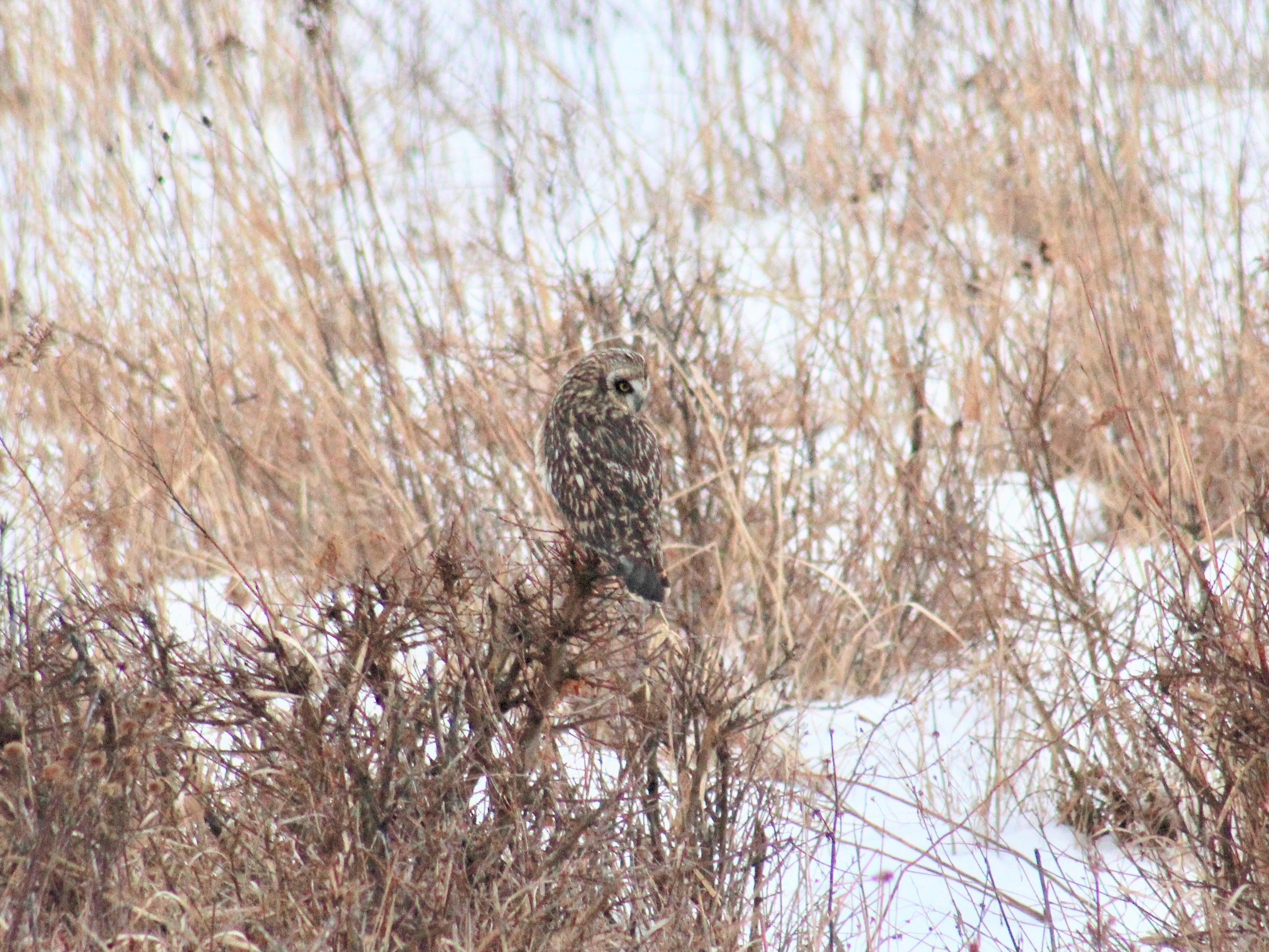
You can see other owls in Iowa during the winter months when the snowy owl and saw whet owl migrate from the North Country. These tundra birds head north when it is time for them to nest.
No matter where an owl in Iowa nests, every owl depends on grasslands for hunting. With conservation programs, owls and grassland species can become a more common sight in years to come.
The most important part of a bird's year, including the owls, is the time of nesting and raising young. Food availability plays a big part in when an owl nests and how many young survive. The period of time in which baby owls fledge seems to follow the timing of the maximum abundance of prey animals. In regards to our earliest nester, the great horned owl, the young owls are 6-8 weeks old when they begin to venture from their nest. These 'brancher' owls are not even able to fly yet, but their appetite is huge. Adult owls will eat 3-4 mice an evening, but growing young need almost three times that many. As the young owls gain enough strength to learn the ways of owl life, the populations of their food sources have become more plentiful.
Winter silence is coming to an end, some owls are already nesting and bearing the cold, cardinals, chickadees, and robins are bringing in the mornings with song. So, yes, hope is on the way for the quietness to turn into melodies.
Owls and their Unique Characteristics
Mike Havlik from the Des Moines YMCA Camp helps us learn about owl eyes, ears, feathers, and feet. More videos here at Video Vignettes.
Other owl links:
- Lists of Iowa Endangered, Threatened and Species of Special Concern
- The Owl Pages - Physiology
- International Owl Center
- Iowa DNR barn owl info and nest box plans
- Right Bird, Right House, Cornell Lab of Ornithology NestWatch
- Flying Tigers, Mason City Globe Gazette, 2/23,14
Books to look at:
- Owl Moon by Jane Yolen
Woodworking for Wildlife, Homes for Birds and Animals by Carrol L. Henderson, Nongame Wildlife Program, Minnesota Department of Natural Resources
published Monday, March 1, 2021

